Everest Base Camp - My First Trek in Himalayas
TREKKING IN NEPAL
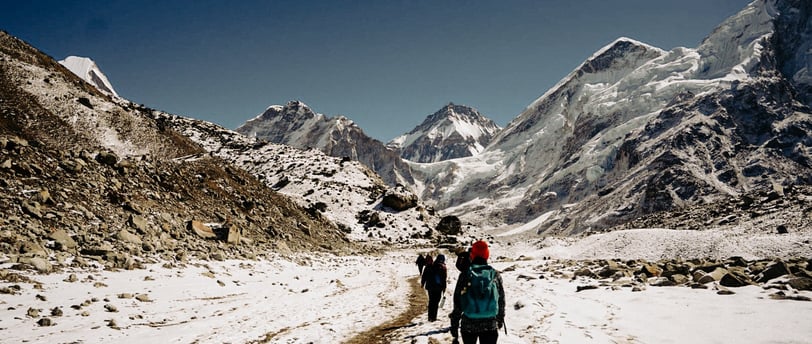

In November 2023, I booked my flights to Nepal with a feeling deep inside that this would be a trip like no other. While I couldn’t pinpoint the exact reason for choosing to hike to Everest Base Camp (EBC), my soul knew it was going to be something special—life-changing, even. But let’s rewind to the beginning.
Preparation: The Road to Readiness
When I committed to EBC, I dove headfirst into preparation. I read countless blogs, watched just about every YouTube video, and even roped my parents into watching them with me—partly to calm their nerves, partly to fuel my own excitement. Each shared experience only strengthened my resolve to take this journey on my own.
Timing and Weather: Picking the Perfect Season
The best times to trek to EBC are October-November and April-May, when the Himalayas usually greet you with clear skies and minimal rain. However, the mountains are unpredictable, so be prepared for any weather. I trekked in April, and we only encountered rain and cloudy skies on our descent back to Lukla. For your notice, if you are tracking off peak season you usually don't need to pay for an accommodation, you only have to make just for meals.
First things first, I needed an agency. I wasn’t about to tackle EBC solo. The Nepalese government has recently made it illegal for foreign citizens to trek solo without a licensed guide. Although I know that some tourists go around the rules and hike alone. While Lithuanian agencies were an option, their high fees weren’t appealing. So, I did my research, read reviews, had a few calls, and ultimately decided to go with a local Nepali agency. It turned out to be a smooth and well-organized trek, but I can’t stress enough how important it is to do your homework and trust your gut when choosing an agency.
Pay close attention to what’s included in your final fee: nights in Kathmandu, airport transfers, free luggage storage, flights to and from Lukla, meals, guide services, permits, porters, and equipment like sleeping bags, duffle bags, and down jackets. I ended up paying extra for a porter (70 euros) and for hot drinks during the trek. You’ll likely also pay extra for Wi-Fi and hot showers, which get pricier the higher you go.
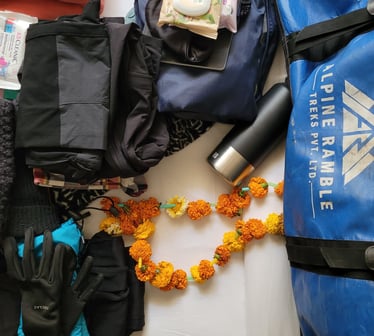

One tip: bring water purification tablets to avoid buying bottled water, you can buy those at any tracking shop in Kathmandu. I had drops to my water as well to clear the taste of purification tables, and it was a game changer (I used "Micropur" 10 ml which I bought in Lithuania).
DAY 1: Lukla to Phakding
Elevation at Lukla: 2,860 meters (9,383 feet)
Elevation at Phakding: 2,610 meters (8,563 feet)
Elevation Loss: 250 meters (820 feet)
Distance: 7.8 km (5 miles)
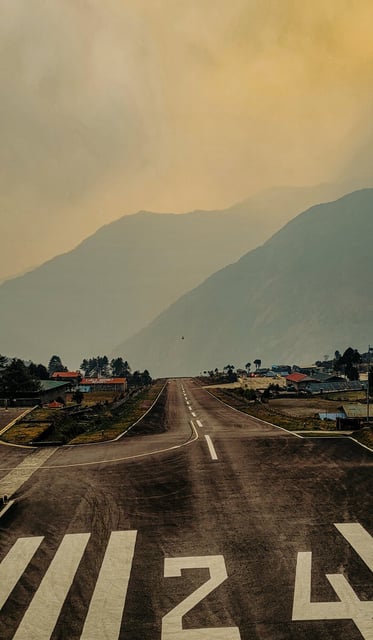

Our adventure began at 2:30 a.m. in Kathmandu, with a bumpy, nerve-wracking ride to Ramechhap airport. By 7 a.m., we arrived at this tiny airport, already bustling with trekkers. After a long, anxious wait (9 hours), we finally boarded our little airplane for the flight to Lukla—the world’s most dangerous airport. Pro tip: sit on the left side of the plane for a chance to see Mount Everest, though clouds might obscure your view.
Once we landed, we met our porters and second guide, who would carry our duffle bags containing sleeping gear and clothes. I only carried a small backpack with water, a raincoat, layers, and snacks. As we started our hike to Phakding, the reality of the journey set in. I was finally walking in the Himalayas, on the verge of one of the hardest but most spectacular journeys of my life.
After a long day, I was exhausted and eager to reach our first tea house. It was cold—much colder than I expected. I went to sleep fully dressed in thermals, a sweater, socks, gloves, and a cap, but I slept well. Our group consisted of a couple, a pair of friends, and two solo hikers (myself and another guy). Most nights, we were surprised with individual rooms, which was a pleasant surprise, though at the final destination, we had to share.
Each tea house was unique—some nice, others very basic. I heard complaints from other tourists about the rooms, water, or food, but honestly, if you’re looking for luxury, you won’t find it here. The simplicity and the chance to connect with local people are part of the charm.
Lukla airport: then you see it by your eyes you understand why it is named as most dangerous airport in the world.
DAY 2: Phakding to Namche Bazzar
Elevation at Phakding: 2,610 meters (8,563 feet)
Elevation at Namche Bazaar: 3,440 meters (11,286 feet)
Elevation Gain: 830 meters (2,723 feet)
Distance: 10.4 km (6.5 miles)
After breakfast and some warm tea, we set off for Namche Bazaar. You’ll read in other blogs that this day is one of the toughest, and it’s true. The combination of long distance and significant elevation gain makes it a real challenge. But despite the difficulty, the views are breathtaking, and the camaraderie with fellow trekkers and locals makes it all worth it. Remember to greet everyone with a cheerful “Namaste” and enjoy the journey at your own pace.
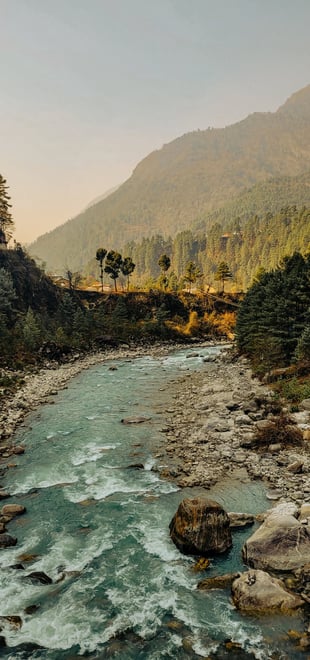

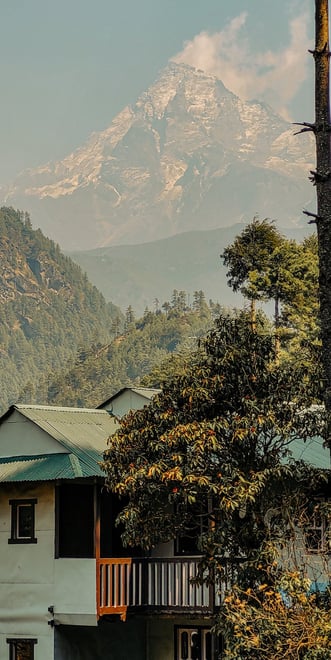

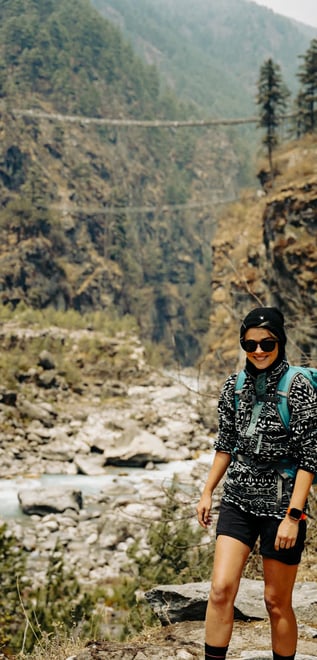

The Challenge of Altitude
Altitude sickness was my biggest fear, as I had never been this high before. It’s a serious concern—people can die from it, so take it seriously. I drank three liters of water each day, avoided meat and alcohol, and even skipped showers to avoid catching a cold. I cleaned up with wet wipes and dry shampoo, which was sufficient. Other members of our group weren’t as lucky, suffering from headaches, nausea, and other symptoms. Our guide monitored our oxygen levels regularly, and it’s important to communicate if you’re feeling unwell.
Namche Bazaar is your first acclimatisation stop. Take the time to explore the village, and if you’re feeling up to it, consider an early morning hike for a spectacular sunrise. I opted for extra sleep, but others in our group who made the trek shared incredible photos.
DAY 3: Acclimatisation Day – Seeing Everest for the First Time
Acclimatisation is crucial as you ascend, so we spent this day hiking to 3,438 meters to Everest View Hotel. The hike was tough, especially with all the rock steps, but the reward was a cup of tea or garlic soup with a view of Mount Everest (the menu prices are high here). This spot is popular with tourists who arrive by helicopter for a quick photo op before heading back.
Later, we visited a site where we learned about the pollution issues in the Himalayas and were encouraged to carry some trash back to Lukla to help with clean-up efforts.
Also you will have an option to visit Sherpa Culture Museum (extra fee). You can't take pictures there but you will learn a rich history of sherpas and you will see some photos of the tragedy in Mount Everest in May 10th, 1996.
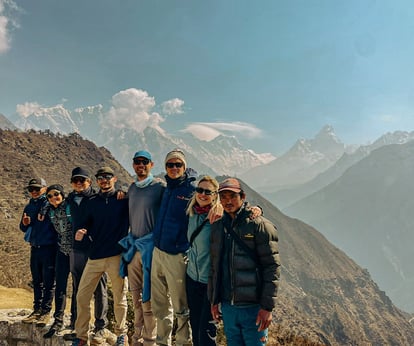

DAY 4: Namche to Tengboche
Elevation at Namche: 3,440 meters (11,286 feet)
Elevation at Tengboche: 3,870 meters (12,664 feet)
Elevation Gain: 430 meters (1,378 feet)
Distance: 9 km (5.6 miles)
This day was another beautiful one, with a steady ascent to Tengboche. The highlight was visiting the Tengboche Monastery, where we gave prayers for our loved ones. For me, it was particularly emotional, as my grandmother had passed away the day before my flight to Nepal. Her memory accompanied me throughout the trek.
As you hike, you’ll see locals carrying immense loads on their backs—doors, wood, stoves—often in just flip-flops. It’s a humbling reminder of how little we truly need in life and how much unnecessary stuff we accumulate. One annoyance during the trek was other hikers playing loud music. I kept thinking, “Can’t you just enjoy the sounds of nature?” But some people can’t seem to be alone with their thoughts.
Charging your devices can be another challenge. Many places charge extra for electricity, so I relied on power banks. Make sure to charge everything before heading higher into the mountains.
DAY 5: Tengboche to Dingboche
Elevation at Tengboche: 3,870 meters (12,664 feet)
Elevation at Dingboche: 4,410 meters (14,469 feet)
Elevation Gain: 540 meters (1,505 feet)
Distance: 10.7 km (6.6 miles)
This was a long day. One member of our group fell ill and couldn’t continue, so he stayed behind with our second guide to rest before rejoining us in Dingboche. Listen to your body—there’s no shame in taking it slow or stopping if needed.
Walking uphill felt as exhausting as the last mile of a marathon. It took a lot of willpower to keep going, but the stunning scenery made every step worth it. After a long day, we finally reached our tea house, where we spent the evening playing cards and enjoying some well-deserved rest.
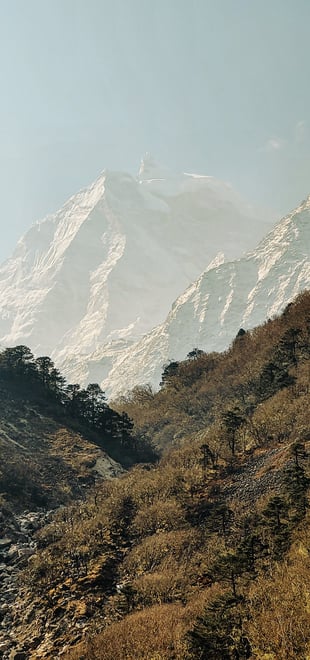

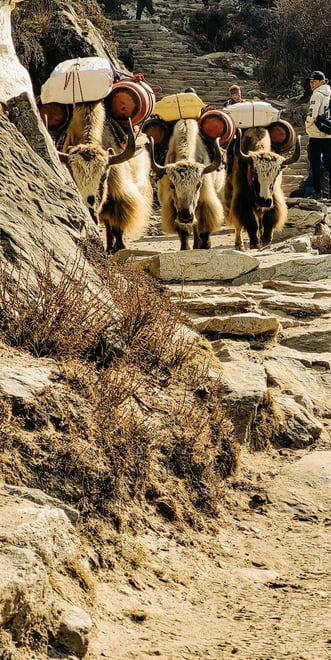

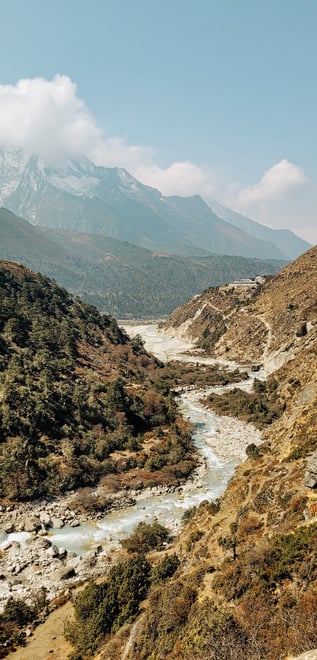

DAY 6: Acclimatisation Day in Dingboche
At 4,410 meters, my oxygen levels started to dip, but I still didn’t feel any symptoms of altitude sickness. Acclimatization is essential, so we hiked up to a higher elevation before descending to rest. As I reached the halfway point of my trek, I found myself standing at an altitude of around 4,700 meters. This is usually where many trekkers decide to turn back and return to the safety of Dingboche. However, I couldn’t help but notice a few determined souls pushing onward towards the peak of Nagarjuna, which stands tall at 5,050 meters. The thought of missing out on this opportunity gnawed at me—how could I resist the call of the mountain?
Already, I had been rewarded with breathtakingly close views of some of the Himalayas’ most iconic peaks: Ama Dablam, Makalu, Island Peak, Lhotse, and Thamserku. But the lure of even closer views, coupled with the desire for that sweet sense of accomplishment, was simply too strong to ignore.
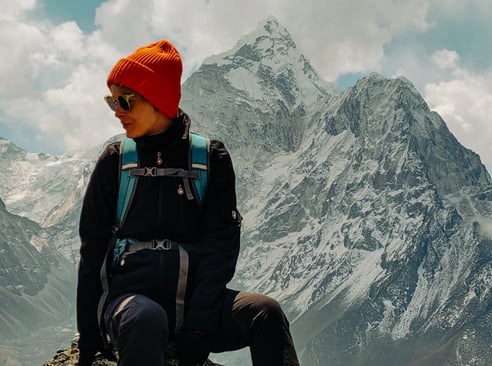

And so, with my resolve strengthened and my heart set on reaching the summit, I pressed on. The trek was nothing short of grueling—a two-hour uphill battle against thinning air and tired legs. Yet, with every step, the panorama around me became more awe-inspiring, urging me to keep going.
When I finally reached the top, all the exhaustion melted away, replaced by a profound sense of achievement. The view of Ama Dablam, my favorite mountain in the world (second only to Everest, of course), was nothing short of majestic. I stood there in awe, feeling like I could almost reach out and touch its snow-capped peaks. The trek had been tough, no doubt, but the reward was more than worth the effort. If I could have asked for anything more, it would have been a teleportation device for the way down!
DAY 7: Dingboche to Lobuche
Elevation at Dingboche: 4,410 meters (14,469 feet)
Elevation at Lobuche: 4,940 meters (16,207 feet)
Elevation Gain: 530 meters (1,738 feet)
Distance: 9.7 km (6 miles)
The scenery took my breath away again today. Ama Dablam, my favorite mountain so far, stood tall, mystical, and powerful, like a guardian of the Himalayas. My dream is to one day trek to Ama Dablam Base Camp—what an adventure that would be!
After two hours of trekking, we arrived at a flat area that was unlike anything we had seen before—a field of memorial stupas dedicated to those who lost their lives while climbing Mount Everest. The sight of nearly a hundred stupas, each one representing a climber's life and dreams, was profoundly moving.
We took a moment to rest, but more importantly, to reflect. It was an emotional experience standing there, surrounded by the memorials of these incredible, inspirational people who dared to challenge the highest peak in the world. Their courage and determination were palpable, yet the sadness of their loss hung heavily in the air.
The memorials were a stark reminder of the risks and sacrifices that come with the pursuit of such lofty goals. While the trek to Everest Base Camp is challenging, the journey to the summit is a completely different realm, where even the most experienced climbers can face unforeseen dangers.
Visiting this place was heartwarming in its own bittersweet way. It served as a powerful reminder to respect the mountains and to appreciate every step of the journey. The sight of those stupas reinforced the idea that while the pursuit of greatness is admirable, safety and preparedness are paramount. As we continued our trek, the memory of that somber field stayed with me, adding a deeper layer of meaning to my own journey.
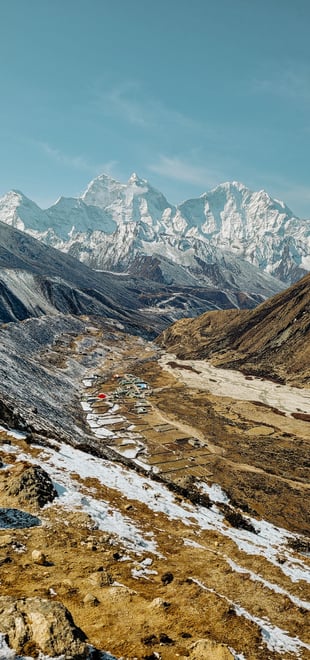

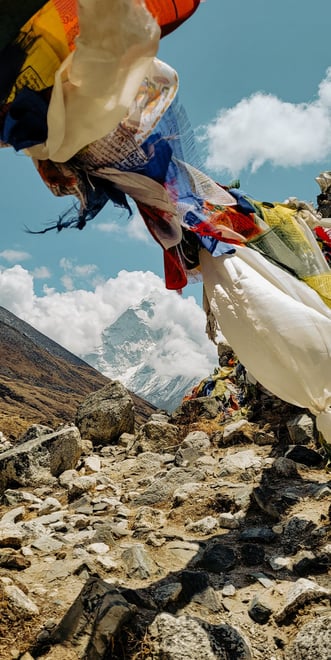

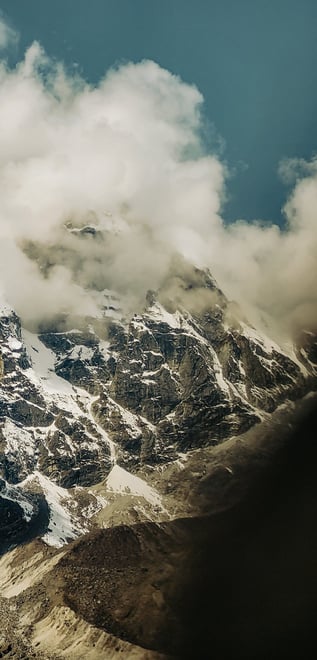

Lobuche is a small, quiet place with only a few teahouses. The cold here is biting, and for the first time, I truly felt the thinness of the air. The group was less lively than usual; some of us were struggling with headaches, so we all turned in early, resting up for what we knew would be one of the most exciting days of our lives.
DAY 8: Lobuche to Gorak Shep to Everest Base Camp
Elevation at Lobuche: 4,940 meters (16,207 feet)
Elevation at Gorak Shep: 5,164 meters (16,942 feet)
Elevation at Everest Base Camp: 5,364 meters (17,598 feet)
Elevation Gain: 424 meters (1,391 feet)
Distance: 11.3 km (7 miles)
This was it—the day we finally reached Everest Base Camp! We set out early, hoping to beat the other groups. But our pace was slowed when one of the trekker in our group struggled with her breathing. Her oxygen levels dropped, but she wasn’t in immediate danger, so we pressed on. I was so proud of her when we reached EBC. Despite the challenges, she stayed positive throughout the trek. I still think about that couple from the Netherlands—they were such good people.
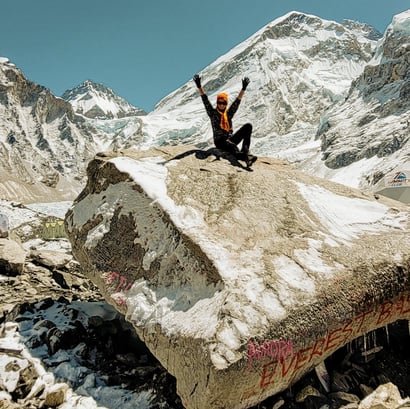

The hike itself wasn’t too difficult, mostly because I knew what was waiting at the end: Everest Base Camp! The sheer size of the camp surprised me. We took some photos on the famous rock, scrawled our names on it, and then made our way back to Gorak Shep.
If you ever find yourself at Gorak Shep, manage your expectations. The rooms and food are as basic as it gets, and you’ll pay a hefty 700 NPR for bottled water (though I did find a shop nearby selling it for 600 NPR). The cold here is intense; water freezes overnight, and I shared my room with a girl who wasn’t doing well—no appetite, dizziness, and clearly not getting enough oxygen.
DAY 9: Kala Patthar and hike back to Pheriche
Elevation at Gorak Shep: 5,164 meters (16,942 feet)
Elevation at Kala Patthar: 5,545 meters (18,192 feet)
This was a special day, one I’ll never forget. I knew I was about to reach the highest point I’ve ever been, and there was no way I was backing out. We started our hike at 4 a.m., under a sky so clear it seemed like you could reach out and touch the stars. I had never seen the Milky Way so clearly before.
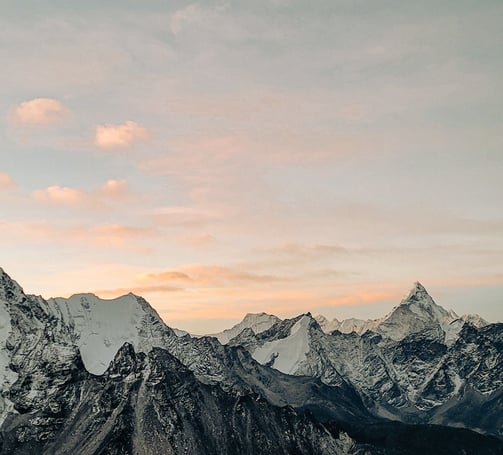

The hike was tough—steep, cold, and exhausting. I found myself needing to stop every five minutes. At one point, I thought I couldn’t go on, but I pushed myself to keep moving. With every step, the thin air makes it increasingly challenging, and frequent stops are necessary to catch your breath.
Despite the difficulty, the reward at the summit is beyond words. The sun slowly rises over the Himalayas, casting golden light on the peaks, with Everest standing majestically above them all. The cold bites, and the wind howls, but in those few minutes at the top, you feel an overwhelming sense of achievement and peace. It’s a moment that makes all the effort worthwhile, where the grandeur of the mountains meets the quiet reflection of your own journey. I sat there in silence, watching the Himalayas wake up, and for the first time, Mount Everest revealed itself in all its glory. In that moment, I felt a profound shift, as if my life had taken a new direction.
As we made our way down, we reunited with one of our group members, a girl who had wisely chosen not to risk her health by attempting the grueling hike to Kala Patthar.
Her decision was a reminder that listening to your body is crucial at high altitudes, where the thin air can take a toll on even the fittest trekkers. Her smile and positivity, despite not reaching the summit, were inspiring and reminded us all that the journey is as important as the destination.
Pheriche, a small village nestled in a valley, was a welcome sight after a long day of trekking. Known for its health post, which serves trekkers who experience altitude-related issues, Pheriche provided a warm meal and a place to rest. The atmosphere in the village was quiet and peaceful, a stark contrast to the high-energy vibe at higher altitudes.
As we settled in for the night, the group shared stories of the day’s adventures, laughing about the challenges we faced and the incredible views we had witnessed. It was a day that reminded us of the importance of perseverance, the value of good company, and the beauty of Nepal’s rugged landscapes.
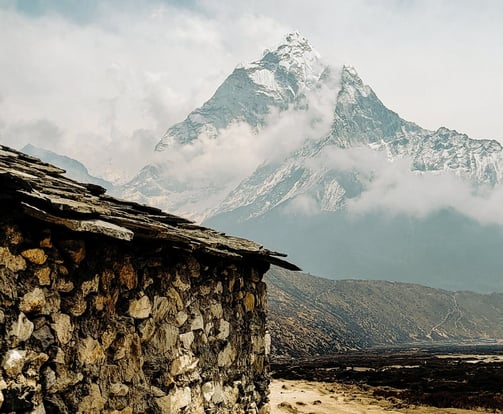

DAY 10: Pheriche to Namche Bazaar
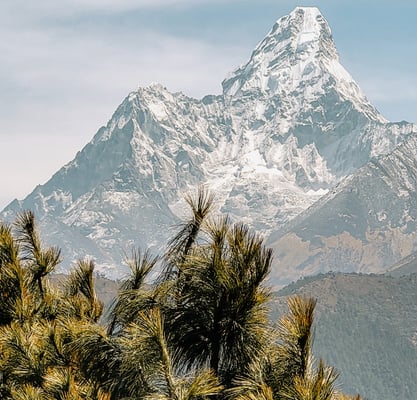

The trek from Pheriche to Namche Bazaar marked the beginning of our descent, but it was far from a downhill stroll. Leaving the quiet, healing atmosphere of Pheriche, we set out early, energized by the crisp morning air. The trail was a mix of gentle slopes and steep descents, with the majestic Himalayas providing a stunning backdrop that never grew old.
As we trekked, the landscape gradually transformed from barren, rocky terrain to lush, green forests. It felt like we were stepping back into a world of life and vibrancy, away from the high-altitude wilderness. Along the way, we crossed suspension bridges that swayed gently over deep gorges, a thrilling experience that never failed to get our adrenaline pumping.
Namche Bazaar, the bustling gateway to Everest, welcomed us back with open arms. The hike to Namche Bazaar was a celebration of our achievements, and the beginning of our return to the comforts of lower altitudes.
In Namche, we treated ourselves to well-deserved comforts—a slice of pizza at a local café and a pint at the Irish Pub.
The lively atmosphere was a stark contrast to the remote areas we had trekked through, and we reveled in the joy of reaching this milestone. The trek from Pheriche to Namche Bazaar wasn’t just about covering distance; it was about embracing the journey, savoring every moment, and feeling a deep sense of gratitude for the experience.
DAY 11: Namche Bazaar to Lukla
The final leg of the trek from Namche Bazaar to Lukla was a blend of emotions, as the journey that started with anticipation was now drawing to a close. My biggest suggestions for this day: take some rubbish back to Lukla, and secondly - don't rush! Enjoy your last day by stopping and watching significant landscape again and again.
However, not everything was as celebratory as we hoped. The girl in our group had taken a turn for the worse the previous day. Her condition had deteriorated, and it was clear she couldn't continue the trek on foot. Thankfully, the guide was able to arrange for her to reach Lukla on horseback. It was a somber reminder of the physical toll this adventure takes, even as we pushed through the final hours of our journey.
The trail itself, though familiar, still held its challenges. Descending can be tough on the knees, and by this point, the fatigue had set in. But with every step closer to Lukla, the excitement of completing this incredible journey began to outweigh the weariness. The thought of a warm meal, a hot shower, and the promise of returning home kept us moving forward.
The adventure was nearly over, but the lessons, the friendships, and the breathtaking views would stay with us forever.
DAY 12: Lukla to Kathmandu (a flight that didn't happen)
The final leg of our Everest Base Camp adventure was supposed to be a straightforward flight from Lukla back to Kathmandu. However, as anyone who’s trekked in the Himalayas knows, the weather can be unpredictable. Our flight was delayed, and we quickly realized we weren’t alone in this situation. Some people had been waiting for more than three days to catch a flight out. The uncertainty and waiting were frustrating, but it also reinforced the importance of planning your flight back home with extra buffer days. It’s a lesson in patience and adaptability—a reminder that the mountains, and life, often operate on their own schedule.
So, instead of stressing, we embraced the unexpected downtime, reflecting on our incredible journey and sharing stories with fellow trekkers. If you’re planning this trek, take note: always allow extra time for your return flight to avoid unnecessary stress. The mountains might delay you, but they’ll also teach you to go with the flow.
DAY 13: Lukla to Kathmandu. Finally!
Despite the uncertainty, our agency worked wonders, managing to secure flights for our group on three different planes. The tension was high as we waited, but eventually, we took off, leaving the rugged beauty of the mountains behind.
When we landed at Ramechhap airport, we reunited with the first batch of our group—a lovely couple from the Netherlands. A jeep was already arranged, and we embarked on the final leg of our journey back to Kathmandu. That evening, we gathered in Thamel for our last dinner together, a bittersweet end to an unforgettable adventure. With laughter, shared memories, and a sense of accomplishment, we toasted to the experience that had bonded us all.
Final words
Let me tell you—this trek isn't just for the super-fit mountaineers. With some physical preparation, a bit of determination, and a lot of heart, absolutely anyone can do this trek.
Before you lace up your boots, here are a few suggestions: First, don't rush—acclimatisation is key. Give your body time to adjust to the altitude, and trust me, your lungs will thank you later. Second, pack smart but light. You don’t need that extra pair of jeans or a novel to read at 5,000 meters—save the space for essentials like a good down jacket and, of course, snacks!
And lastly, embrace the journey. You’ll face some tough days, maybe even question why you’re doing this, but the reward at the end—standing at the base of the world's tallest peak—is worth every step. Plus, you'll come home with stories that will make you the most interesting person at any dinner party.
So, get ready, train a bit, and start planning. Your Everest Base Camp adventure awaits, and trust me, it’s one you’ll never forget!
